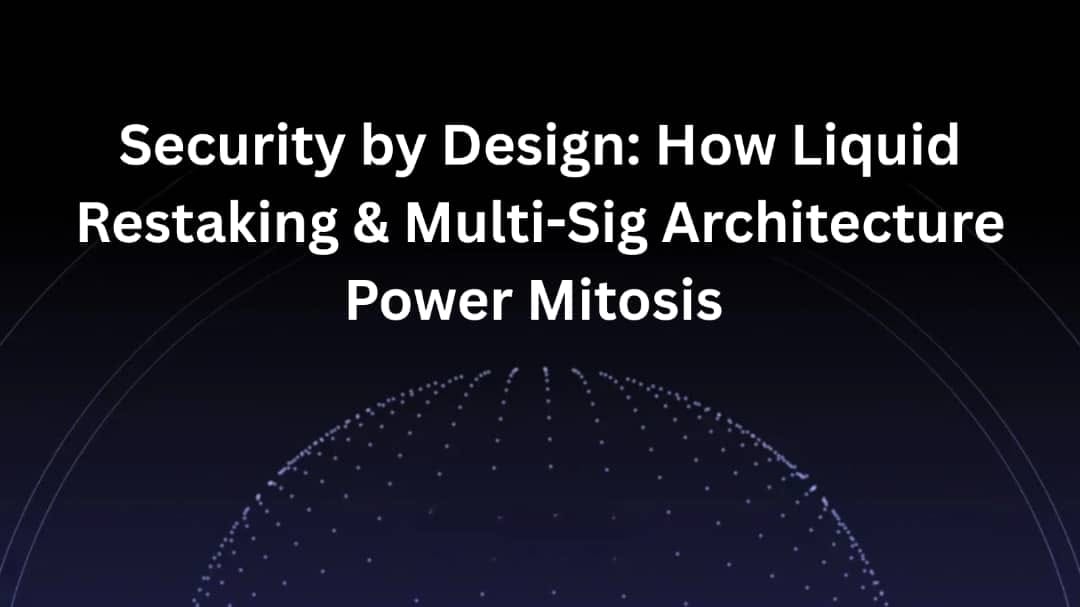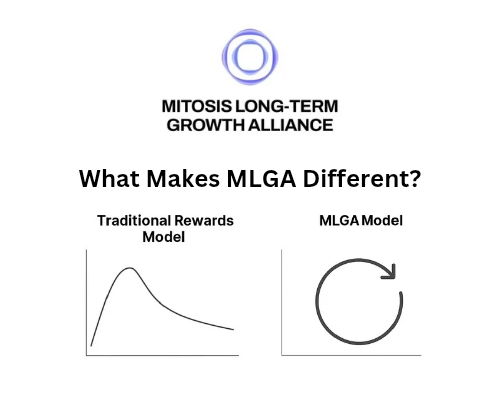Security by Design: How Liquid Restaking & Multi-Sig Architecture Power Mitosis

Introduction
In the rapidly evolving landscape of decentralized finance (DeFi), security remains a paramount concern for users and developers alike. As the complexity of blockchain interactions increases, so does the need for robust security measures that can protect assets and ensure trust in the system. Mitosis, a pioneering project in the DeFi space, leverages innovative technologies such as liquid restaking, multi-signature (multi-sig) architecture, and decentralized governance to create a secure and efficient platform for cross-chain transactions. This article explores how these components work together to build trust and enhance security within the Mitosis ecosystem.
1. Understanding Liquid Restaking
1.1 What is Liquid Restaking?
Liquid restaking refers to the process of utilizing staked assets, such as Ethereum (ETH), to generate additional liquidity while maintaining the security and integrity of the underlying assets. In traditional staking, users lock up their assets to participate in network consensus and earn rewards. However, this often results in reduced liquidity, as staked assets cannot be easily accessed or utilized for other purposes.
Liquid restaking addresses this issue by allowing users to stake their assets while simultaneously receiving a liquid representation of their staked position. This liquid token can then be used in various DeFi applications, enabling users to earn additional yields without sacrificing the benefits of staking.
1.2 Benefits of Liquid Restaking
- Enhanced Liquidity: By providing a liquid representation of staked assets, users can access their funds while still participating in staking rewards. This dual benefit enhances overall liquidity in the DeFi ecosystem.
- Increased Yield Opportunities: Users can leverage their liquid staked tokens in various DeFi protocols, allowing them to earn additional yields on top of their staking rewards.
- Risk Mitigation: Liquid restaking helps mitigate the risks associated with traditional staking, as users can exit their positions more easily if market conditions change.
2. Collateral Token Standards
2.1 The Role of Collateral Tokens
Collateral tokens are essential components of DeFi protocols, serving as a means of securing loans and facilitating transactions. In the context of Mitosis, collateral tokens are used to back various financial products and services, ensuring that users have a reliable and secure means of engaging with the platform.
2.2 Key Features of Collateral Token Standards
- Interoperability: Collateral tokens are designed to be compatible across multiple blockchain networks, enabling seamless asset transfers and interactions.
- Security: By utilizing collateral tokens, Mitosis can ensure that loans and transactions are backed by secure assets, reducing the risk of default and enhancing trust in the system.
- Flexibility: Collateral token standards allow users to choose from a variety of assets to use as collateral, providing greater flexibility in managing their financial positions.
3. Hyperlane’s AVS: A Security Layer
3.1 What is Hyperlane’s AVS?
Hyperlane’s Asset Verification System (AVS) is a critical component of the Hyperlane interoperability protocol. AVS provides a secure framework for verifying the authenticity and integrity of assets as they move across different blockchain networks. This system plays a vital role in ensuring that cross-chain transactions are executed securely and efficiently.
3.2 Benefits of Hyperlane’s AVS
- Asset Integrity: AVS ensures that assets are verified and authenticated before being transferred across chains, reducing the risk of fraud and ensuring that users can trust the assets they are interacting with.
- Real-Time Monitoring: The AVS provides real-time monitoring of asset movements, allowing users to track their assets and ensuring transparency in the transaction process.
- Enhanced Security: By implementing a robust verification system, Hyperlane’s AVS enhances the overall security of cross-chain transactions, providing users with greater confidence in the integrity of their assets.
4. Multi-Signature Architecture
4.1 What is Multi-Signature Architecture?
Multi-signature architecture (multi-sig) is a security mechanism that requires multiple signatures or approvals before a transaction can be executed. This approach enhances security by ensuring that no single individual has complete control over the assets, reducing the risk of fraud or unauthorized access.
4.2 Benefits of Multi-Signature Architecture in Mitosis
- Increased Security: By requiring multiple approvals for transactions, multi-sig architecture significantly reduces the risk of unauthorized access and enhances the overall security of the platform.
- Decentralized Governance: Multi-sig architecture supports decentralized governance by allowing multiple stakeholders to participate in decision-making processes. This ensures that the interests of the community are represented and that no single entity can exert undue influence over the platform.
- Transparency: Multi-sig transactions are recorded on the blockchain, providing a transparent and auditable record of all actions taken within the Mitosis ecosystem.
5. DAO-Governed Configuration
5.1 The Role of Decentralized Autonomous Organizations (DAOs)
Decentralized Autonomous Organizations (DAOs) are governance structures that enable community members to participate in decision-making processes. In the context of Mitosis, a DAO-governed configuration allows users to have a say in the development and direction of the platform, fostering a sense of ownership and trust among participants.
5.2 Benefits of DAO-Governed Configuration
- Community Engagement: By involving the community in governance, Mitosis can ensure that the platform evolves in a way that meets the needs and preferences of its users.
- Transparency and Accountability: DAO governance promotes transparency and accountability, as decisions are made collectively and recorded on the blockchain.
- Adaptability: A DAO-governed configuration allows Mitosis to adapt to changing market conditions and user needs, ensuring that the platform remains relevant and competitive.
6. Building Trust Through Security
6.1 The Importance of Trust in DeFi
Trust is a fundamental component of any financial system, and it is especially critical in the DeFi space, where users often interact with smart contracts and decentralized protocols without the oversight of traditional financial institutions. Mitosis recognizes the importance of building trust through security, and its innovative approach to liquid restaking, collateral token standards, multi-sig architecture, and DAO governance plays a crucial role in achieving this goal.
6.2 How Mitosis Builds Trust
- Robust Security Measures: By implementing liquid restaking, collateral token standards, and multi-sig architecture, Mitosis creates a secure environment for users to engage with the platform.
- Decentralized Governance: The DAO-governed configuration ensures that users have a voice in the platform's development, fostering a sense of community and trust among participants.
- Transparency and Accountability: Mitosis prioritizes transparency in its operations, providing users with clear information about how their assets are managed and how decisions are made.
Conclusion
In conclusion, Mitosis leverages innovative technologies such as liquid restaking, collateral token standards, Hyperlane’s AVS, and multi-signature architecture to create a secure and efficient platform for cross-chain transactions. By prioritizing security and trust, Mitosis is well-positioned to thrive in the competitive DeFi landscape. As the ecosystem continues to evolve, the commitment to security by design will play a crucial role in attracting users and fostering long-term growth.
Further Exploration
For those interested in learning more about Mitosis and its approach to security in DeFi, consider exploring the following resources:

Comments ()